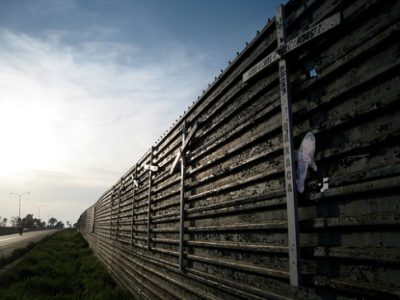Demographics
Immigrants are a vital, dynamic part of the U.S. population—especially when it comes to the workforce. 77.1% of immigrants are of working age (16–64), compared to just 62.0% of U.S.-born residents, making them key contributors to the economy as both taxpayers and consumers.
- 22.9 million immigrants are active in the U.S. workforce
- 74% of foreign-born residents are proficient in English
- 89.4% of all undocumented immigrants are of working age
- 5.2 million U.S. citizen children living with at least one undocumented family member
- Only 4.9% of immigrants are under 15, compared to 20.3% of U.S.-born residents
- 18% of immigrants are 65+, nearly identical to the 17.7% of U.S.-born seniors

Public Opinion Polls and the Future of Immigration Reform
For those of us who live and breathe immigration reform, it’s hard to remember that immigration isn’t everyone’s top priority. Not surprisingly, public opinion polls and headlines constantly remind us that health care and the economy consistently top the concerns of the general public. Even among Latino voters, a new study shows that health care is the most pressing issue. But this is neither a big surprise nor should it lead to the conclusion that immigration isn’t important. Polls are snapshots, taking the picture of the public psyche on a given day, at a given time, in the context of a range of political concerns. Read More

Transforming the Role of Immigration Enforcement through Immigration Reform
For years, the U.S. government has tried and failed to curb undocumented immigration through enforcement-only tactics at the border and interior raids. The number of Border Patrol Agents has increased substantially over the past years—as have budgets and technological investment at the border—yet none of these increases have resulted in a significant decline in the undocumented population. In fact, we have the largest undocumented population in our nation’s history. Simply enforcing the woefully outdated and ineffectual immigration laws currently on the books is not working. Many immigration enforcement experts—including DHS Secretary Janet Napolitano—agree that the only way to solve our immigration enforcement problems is through comprehensive immigration reform. Read More

Studies Show Latinos Climb Socio-Economic Ladder of Success
As a front-page story in today’s Washington Post reminds us: “Not since the last great wave of immigration to the United States around 1900 has the country’s economic future been so closely entwined with the generational progress of an immigrant group.” The story highlights the degree to which the children of immigrants from Latin America have become crucial to sustaining the working-age population and tax base of the nation—particularly as more and more of the 75 million Baby Boomers retire. Moreover, the parents of these children most likely would not have even come to this country if not for the U.S. economy’s past demand for workers to fill less-skilled jobs—demand which was not being adequately met by the rapidly aging and better-educated native-born labor force. The Post story also casts a spotlight on the insecurities and anxieties of commentators who feel that Latino immigrants and their descendants aren’t integrating into U.S. society and moving up the socio-economic ladder “fast enough.” Although these concerns are certainly understandable, they are as unjustified now as they were a century ago when they were directed at immigrants from southern and eastern Europe. Read More

FAIR Blames Immigrants and Children for Maryland’s Budget Deficit
The anti-immigrant Federation for American Immigration Reform (FAIR) claims in a new report that “Maryland’s illegal immigrant population costs the state’s taxpayers more than $1.4 billion per year for education, medical care and incarceration.” However, the statistical contortions in which FAIR engages to produce this number render it virtually meaningless. FAIR dramatically exaggerates the fiscal “costs” imposed by unauthorized immigrants by including schooling and medical care for their native-born, U.S.-citizen children in its estimate, and completely discounts the economic role that unauthorized workers play as consumers who help support Maryland businesses. Read More

New Report Shines Light on the Economics of Illegal Immigration
Today the Migration Policy Institute (MPI) held an event aimed at dispelling some of the most common myths about illegal immigrants and the U.S. economy and making the case that enforcement-only policies are not cost effective. MPI also released The Economics and Policy of Illegal Immigration in the United States, written by Gordon Hanson, a professor of economics at UC-San Diego. Read More

Immigrants Pull Their Own Weight
This week, the New York-based, non-partisan Fiscal Policy Institute released its long-awaited report, Immigrants and the Economy: Contribution of Immigrant Workers to the Country's 25 Largest Metropolitan Areas. The report studies the 25 largest metro areas (by population) which produce nearly one half of the total gross domestic product of the country. It shows that in the country’s main metropolises, the share of the immigrant population stacks up neatly against their share of economic output. For example, immigrants are responsible for 20% of economic output and make up 20% of the population in these 25 metropolitan areas. In other words, immigrants pull their own weight. Read More

Post Postville, Immigrants Still Vital to Iowa’s Economy
Postville, Iowa—home to one of the largest immigration raids in U.S. history—made headlines again this month when Sholom Rubashkin, owner of Agriprocessors Inc., was convicted of “all but five of the 91 business fraud charges listed in a 163-count indictment.” Although the 72 immigration charges were dropped (since they would have little impact on his final sentence), Rubashkin still faces a total maximum sentence of up to 1,255 years, according to the Des Moines Register. Justice served? Perhaps. But the people of Postville may have a different take on “justice” given the current state of Postville’s crippled economy—an economy that once, like many across the U.S. currently do, depended on immigrants. Read More

Republican Playbook on Immigration Debate Long on Emotions, Short on Facts
Senate Republicans have “thoughtfully’ provided immigration advocates with their strategy for opposing immigration reform in 2010, courtesy of a letter sent to Secretary Napolitano protesting her recent statements that immigration reform is both necessary for DHS to do its job and good for the economy. The letter, signed by twelve Republicans— including Sens. Orrin Hatch of Utah, Charles Grassley of Iowa, and Jeff Sessions of Alabama—was described by Sen. Hatch’s press statement as “taking Napolitano to task” for her remarks. It’s a playbook for the coming year, showing how to make points that are long on emotion and short on facts. Read More

“They” Are “Us”: The Devastating Effects of Broken Immigration Policy on Children in Immigrant Families
The legacy of our broken immigration system extends far beyond our borders or the job market. The price paid by families caught within the system can be devastating, especially when we fail to pay attention to the importance of integrating newcomers into American life. A New York Times editorial this week follows a study that highlights the importance of integrating new Americans and their children. Read More

New Report Shines Light on Detainee Rights Violations in Minnesota
Over the summer, three graduate students at the University of Minnesota’s Humphrey Institute interviewed immigration attorneys and public defenders to document their experiences working with detained immigrants. The result—a heartbreaking account of detainees locked away, without access to counsel or family, in a system where rights and the most minimal detention standards are routinely violated. Read More
Make a contribution
Make a direct impact on the lives of immigrants.
